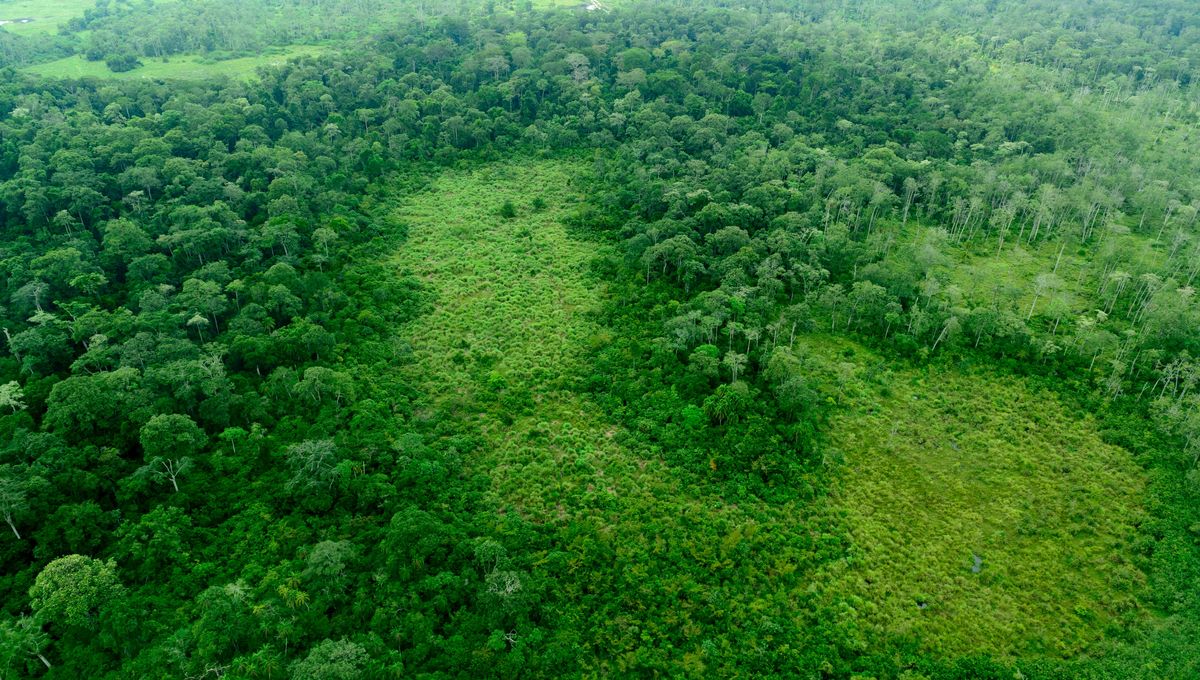
Increasing numbers of people in central Africa are claiming to have seen a mysterious creature known as the Mokèlé-mbèmbé, the dinosaur of the Congo. But, are we about to discover a hitherto unknown species or is there something else going on?
The dinosaur of the forest basin
ADVERTISEMENT
Mokèlé-mbèmbé is a legendary creature said to inhabit the remote forests, swamps and rivers of the Congo Basin – the planet’s second largest rainforest and a vital ecosystem – in Central Africa. The name itself means “one who stops the flow of rivers” in the Lingala language, and it is described as resembling a sauropod – a long necked dinosaur – and is thought to be the size of something like an elephant, hippo or rhinoceros, depending on who you ask.
The story of the Mokèlé-mbèmbé was first told to European explorers in the early 20th century, and it became a stock feature of the popular idea of long-lost dinosaurs living in the deep forests of the continent. Ever since the 1950s, Western cryptid enthusiasts inspired by the works of cryptozoological works of Bernard Heuvelmans and his followers, as well as the romantic stories like Henry Francis’s 1908 book The Last Haunt of the Dinosaur were excited by the prospect of there still being enclaves where the “terrible lizards” still existed. In many ways, popular works of fiction like Jurassic Park have kept this flame alive in the 21st century.
Despite the enthusiasm for the strange dinosaur of the Congo, sightings of it became increasingly less common throughout the last century. However, this seems to be changing. According to National Geographic, people living in the basin have apparently been seeing the mysterious creature with more frequency.
So what’s going on here?
Well, to those who believe there could be a dinosaur out there, the up tick in sightings will likely be greeted by excitement. However, it is likely these encounters are more a symptom of the changing environment. As devastating deforestation in the Congo Basin continues (it lost 23 million hectares of forest between 2000 and 2016), animals are being forced out of their habitats and are bumping into humans more frequently. And humans, as we know, are apt to make identification mistakes or to superimpose features of their imaginations onto what they see, especially if local stories prime them to believe in something specific.
This is not to say that the Congo forests are not home to new species of animals, but the prospect of some missing dinosaur is pretty unlikely.
ADVERTISEMENT
Everyone loves a good cryptid story, regardless of whether you think the beastie in question really can be “out there” or not. As we know, there is much of our planet that we are still exploring, so the possibility of discovering some unknown species that has eluded us is a thrilling prospect, especially in a world that can sometimes feel mundane, disenchanted and increasingly small.
It is possible that this sense of wonder, of the possibility of cryptids, offers some relief from this feeling. Of course, that is not to say some previously fabled creatures have not turned out to be real. The giant squid, Komodo dragons, platypuses and even Gorillas were all once thought to be the products of hearsay before they were confirmed and incorporated into our understanding of the natural world.
However, the case for other famous cryptids, such as the Big Foot of North America, the Loch Ness Monster in Scotland, the Chupacabra of Latin America, and the Yeti of the Himalayas, are less likely as the years go by with nothing but partial sightings and blurred photos to back them up. I personally remain doubtful, but you never know. Still, these mysterious entities can be regarded as examples of folklore in the modern world, and so the nature of the ways people encounter and describe them can tell us much about our relationship with the world around us. And it seems the case of the Mokèlé-mbèmbé may be a good example of this.
“In bigger settlements where habitats are being pushed into and people aren’t used to seeing large animals, they’re suddenly encountering them all the time,” Laura Vlachova, a Czech conservationist told National Geographic. “It’s these people who tell me they’ve seen mokele-mbembe. I think what it really shows is how folklore is starting to reflect the reality of a shrinking ecosystem.”
Source Link: Sightings Of The Legendary Mokele-Mbembe "Dinosaur" Of The Congo Are Increasing. What Is Going On?